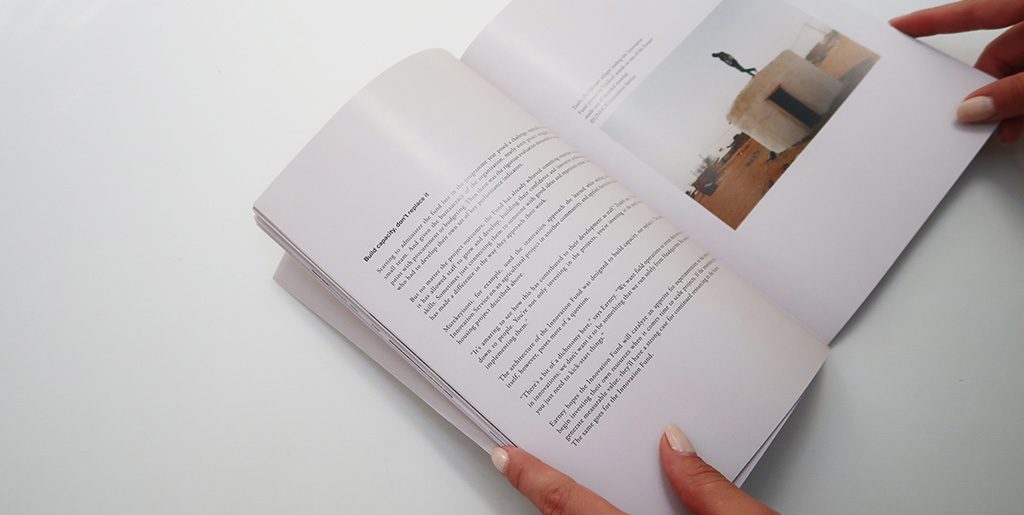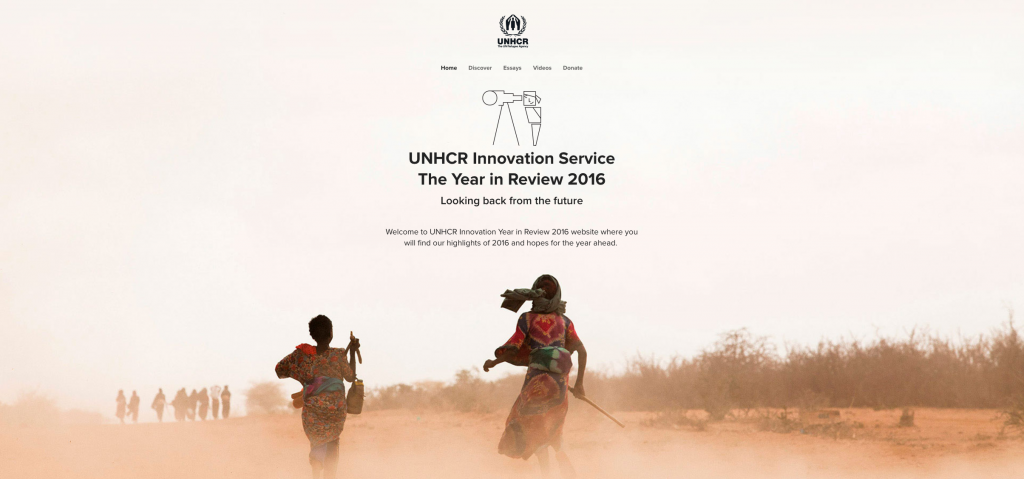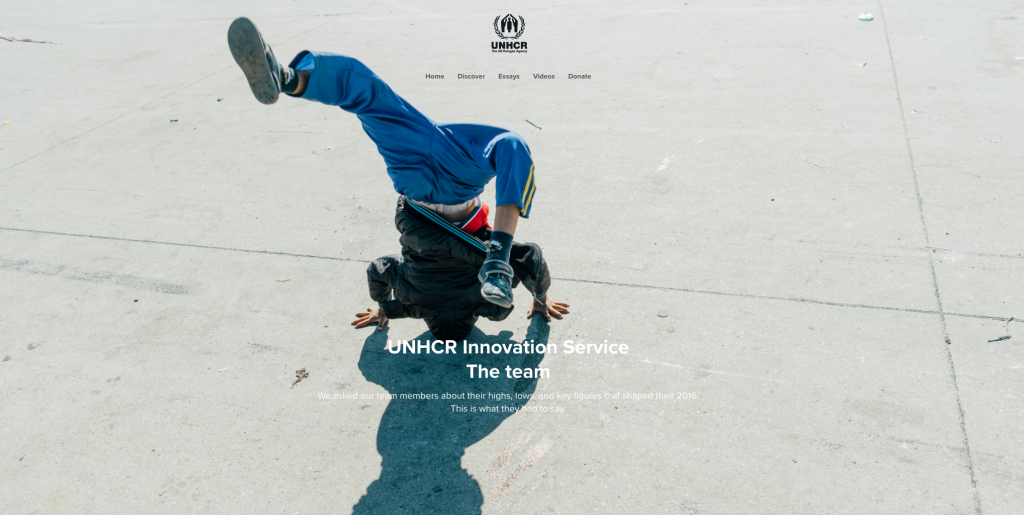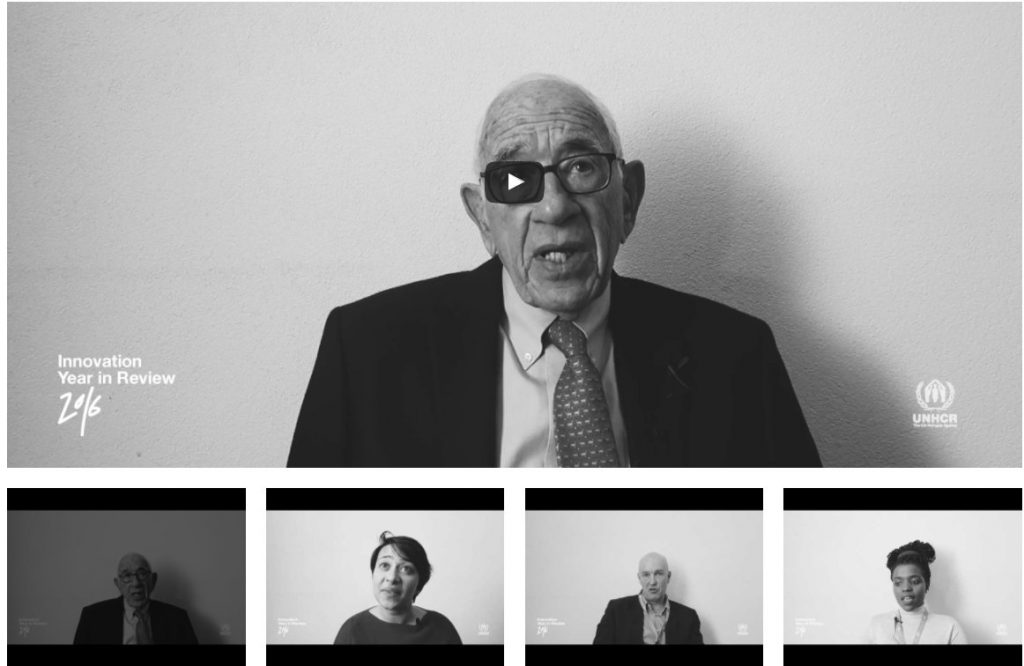A transparent look at innovation in UNHCR
UNHCR’s Innovation Service has launched a website and a new publication to highlight how UNHCR incorporated innovation into its response in 2016. The website includes a set of essays, a Year in Review video series from UNHCR staff, insights from the field on how we can better position the organization for the future and put people at the forefront of the process.
Discover what the Innovation Service was up to in 2016, dig into our diversity and activity figures as well as our favorite quotes from our colleagues from around the world.
A new essay edition on what innovation looks like in practice
Discover practical tips for innovating in UNHCR, our innovation glossary, and newly published essays for UNHCR Innovation’s Year in Review. The articles featured in the new publication include:
- Page 6 | Practical tips for innovating in UNHCR: What are the first steps for including innovation into your day-to-day work at UNHCR? And what does it actually look like in practice? It’s easier than you might think. We’ve outlined practical applications of the innovation process to help get you started.
- Page 10 | How to position UNHCR for the future: For UNHCR’s Innovation Service, our priorities are always to the field.We’re catalyzing the innovation environment within UNHCR, and connecting people, initiatives, and programs both within the organization and outside of it. We are nurturing and learning from innovations emerging from affected communities. Our next step is to anticipate the needs of the future.
- Page 16 | Emergency Lab Case Study – Increasing two-way communication with refugees on the move in Europe: Refugees and migrants, speaking a range of languages, needed critical information. When new waves of refugees and migrants were arriving quickly, UNHCR field staff often ended up answering the same questions over and over again. UNHCR needed a wider range of tools to increase two-way communication with refugees.
- Page 24 | Investing in People, Not Projects – A look at UNHCR’s experimental funding approach: Launched in June 2016, UNHCR’s Innovation Fund is an experimental resource that field operations could use to prototype or scale up good practices and test out creative ideas. The architecture of the Innovation Fund was designed to build capacity and invest in people across the organization who otherwise would not receive financial support. The Innovation Fund ended up allocating USD 1.2 million to applicants across twenty-eight countries during 2016. These were some of the lessons learned along the way.
- Page 34 | Connectivity for everyone: UNHCR’s Connectivity for Refugees program addresses three key challenges: making connectivity available, affordable, and usable. In so doing, it is figuring out ways to bring the digital revolution to displaced people, and to the humanitarians serving them. Simply, we can’t undo the Internet and humanitarian sector will have to embrace technological advances. The challenge for UNHCR will be to lead in this, not be dragged by it.
- Page 42 | Migration, Mitigation and Maps – The predictive role of UNHCR’s first Winter Cell: At the end of 2015, UNHCR was concerned that the “size, speed, and characteristics of the movements” of refugees, particularly approaching winter, may result in adverse consequences for refugees attempting to reach Europe from Turkey. In response to these challenges, a small interdisciplinary team, comprised of five people, was requested to form UNHCR’s first Winter Cell. Although short-lived, it was a successful effort to steer UNHCR towards a more data-driven organization, where the collection, analysis, and application of data was used strategically within an emergency.
- Page 50 | From UNHCR Zimbabwe, the coming of refugee innovators: Often in the humanitarian sector, we treat the symptom instead of the root cause of the problem. This was a lesson learned early by Rumbidzai Mapolisa, an Innovation Fellow based in Harare, Zimbabwe. Following her journey as an Innovation Fellow, Mapolisa and other UNHCR Zimbabwe staff catalyzed a transformation of how the country operation operates. Through strategically bringing the innovation process into their programming cycle, they are not only mainstreaming refugee-led innovation but are creating mindset shift in how traditional humanitarian aid is viewed.
- Page 58 | Why innovation starts with the right mindset: UNHCR’s Innovation Fellows play a leading role in creating the organizational change that will allow UNHCR to adapt with it. We believe that if you want to innovate, you need to focus on the people and that’s the very basis of the Fellowship. But how do we go beyond the Innovation Fellows and create a change in mindset across the entire organization?
- Page 64 | A brief innovation glossary: The word innovation is ubiquitous and confusing to most. We’d use a different word if we could. This brief innovation glossary will give you a one-stop shop for all your innovation buzzwords.
You can download the new Innovation Essay publication here.
Learn about the highs and lows of UNHCR’s Innovation Service
We asked our team members about their highs, lows, and the key figures that shaped their year. This is what they had to say.
A new Youtube series: Innovation Conversations
We asked our UNHCR colleagues about some of the challenges and highlights they had during 2016. From human resources to partnerships, to ICT in emergencies, and protection – watch the videos below to get insight into the day to day lives of humanitarian workers.
Is your voice missing? Share your story:
Our Year in Review is an ever-evolving space where new stories and insights will be added throughout the year. Whether you’re a humanitarian, refugee, asylum seeker, or ordinary citizen who wants to share their story – we want to hear it. Get in touch and send us your ideas on how you want to contribute to our new digital engagement space or our general website by emailing us at innovation@unhcr.org.
If you’d like to repost this article on your website, please see our reposting policy.




